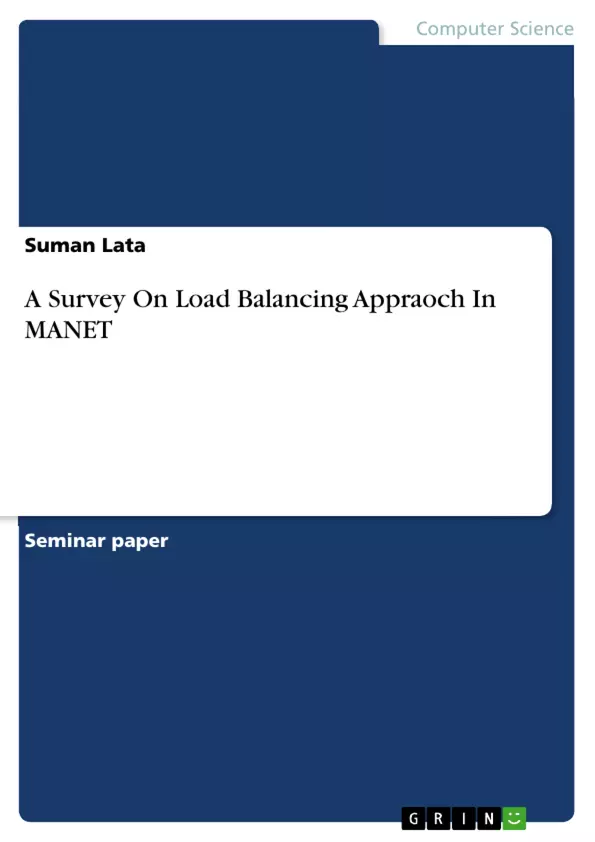The formation of ad hoc wireless networks is stimulated by the requirement of a temporary communication infrastructure for quick communication with minimal configuration among a group of heterogeneous devices. Devices used for such applications could typically be enhanced personal digital assistants (PDAs), laptops with add-on wireless interface cards, or mobile devices with high processing power. Thus, this collaborative and distributed computing environment demands interoperatibilty among the devices. The additional features never come for free as they make the routing and other services more challenging and causes vulnerabilities in network services. Resource constrained, battery powered wireless mobile nodes not only have to self configure and self monitor them but also generates a very accommodating, trustworthy and affable environment. A classification of routing protocols and their brief description, based on their operating principles and underlying features is explained in this paper.
Inhaltsverzeichnis (Table of Contents)
- INTRODUCTION
- Strategies for Routing in Mobile Ad Hoc Networks (MANETs)
- Load Imbalance: A Critical Issue
- Load Balancing in MANETs to Improve the Efficiency and Node lifetime
- Purpose and Classification of Load-Balancing Protocols
- Need of Efficient Scheme to Balance Load in Mobile Ad Hoc Networks
- Types Of Load Balancing
- Various Load Balancing Challenges in MANETS
Zielsetzung und Themenschwerpunkte (Objectives and Key Themes)
This paper explores the challenges and solutions related to load balancing in Mobile Ad Hoc Networks (MANETs). The primary goal is to highlight the importance of load balancing in enhancing network efficiency, extending node lifetime, and optimizing overall network performance.
- Load Imbalance as a critical issue in MANETs
- The need for load balancing to improve network efficiency and node lifetime
- Different types of load balancing schemes based on path, delay, traffic, and computed weights
- Challenges associated with load balancing in MANETs, including mobility factor, energy factor, multiple paths, node-disjoint paths, and congestion on centrally located nodes
- Impact of load balancing on network performance, including end-to-end delay, energy consumption, and node lifetime
Zusammenfassung der Kapitel (Chapter Summaries)
- INTRODUCTION: This chapter introduces the concept of MANETs and the challenges posed by their dynamic nature, including limited resources, node mobility, and link variations. It also discusses the key requirements for effective ad hoc networks, such as scalability, distributed nature, communication capabilities, flexibility, efficient routing, bandwidth and resource availability, and multifence security.
- Strategies for Routing in Mobile Ad Hoc Networks (MANETs): This section provides an overview of routing protocols in MANETs, categorizing them into three major types: Proactive (table-driven), Reactive (on-demand), and Hybrid. It explains the principles and features of each type, highlighting their strengths and weaknesses.
- Load Imbalance: A Critical Issue: This chapter discusses the critical issue of load imbalance in MANETs, emphasizing its impact on network scalability and performance. It introduces the concept of load balancing as a crucial solution for mitigating congestion and ensuring efficient data distribution.
- Load Balancing in MANETs to Improve the Efficiency and Node lifetime: This section explores the significance of load balancing in enhancing the efficiency and lifetime of MANET nodes. It highlights the importance of load balancing for minimizing the workload disparity among nodes and maintaining balanced resource utilization.
- Purpose and Classification of Load-Balancing Protocols: This chapter defines the objectives of load balancing schemes, including path selection, energy consumption balancing, efficiency enhancement, delay reduction, resource utilization optimization, and overall network performance improvement. It also provides a classification of load balancing protocols.
- Need of Efficient Scheme to Balance Load in Mobile Ad Hoc Networks: This chapter emphasizes the necessity of effective load balancing in MANETs to avoid congestion and prevent early node failure due to excessive workload. It discusses the advantages of multiple path transmission and the role of load balancing in distributing data flow across different paths.
- Types Of Load Balancing: This section explores different approaches to load balancing based on the path, delay, traffic, and computed weights of paths. It explains the rationale behind each approach and its impact on network performance.
- Various Load Balancing Challenges in MANETS: This chapter discusses the inherent challenges associated with implementing load balancing in MANETs, including the effects of node mobility, limited battery life, multiple paths, node-disjoint paths, and congestion on centrally located nodes. It underscores the complexity of achieving stable and balanced paths while addressing energy efficiency and QoS requirements.
Schlüsselwörter (Keywords)
The key terms and concepts discussed in this paper include MANETs, load balancing, node mobility, energy consumption, routing protocols, network performance, efficiency, lifetime, congestion, and QoS.
- Arbeit zitieren
- Suman Lata (Autor:in), 2010, A Survey On Load Balancing Appraoch In MANET, München, GRIN Verlag, https://www.hausarbeiten.de/document/274572


